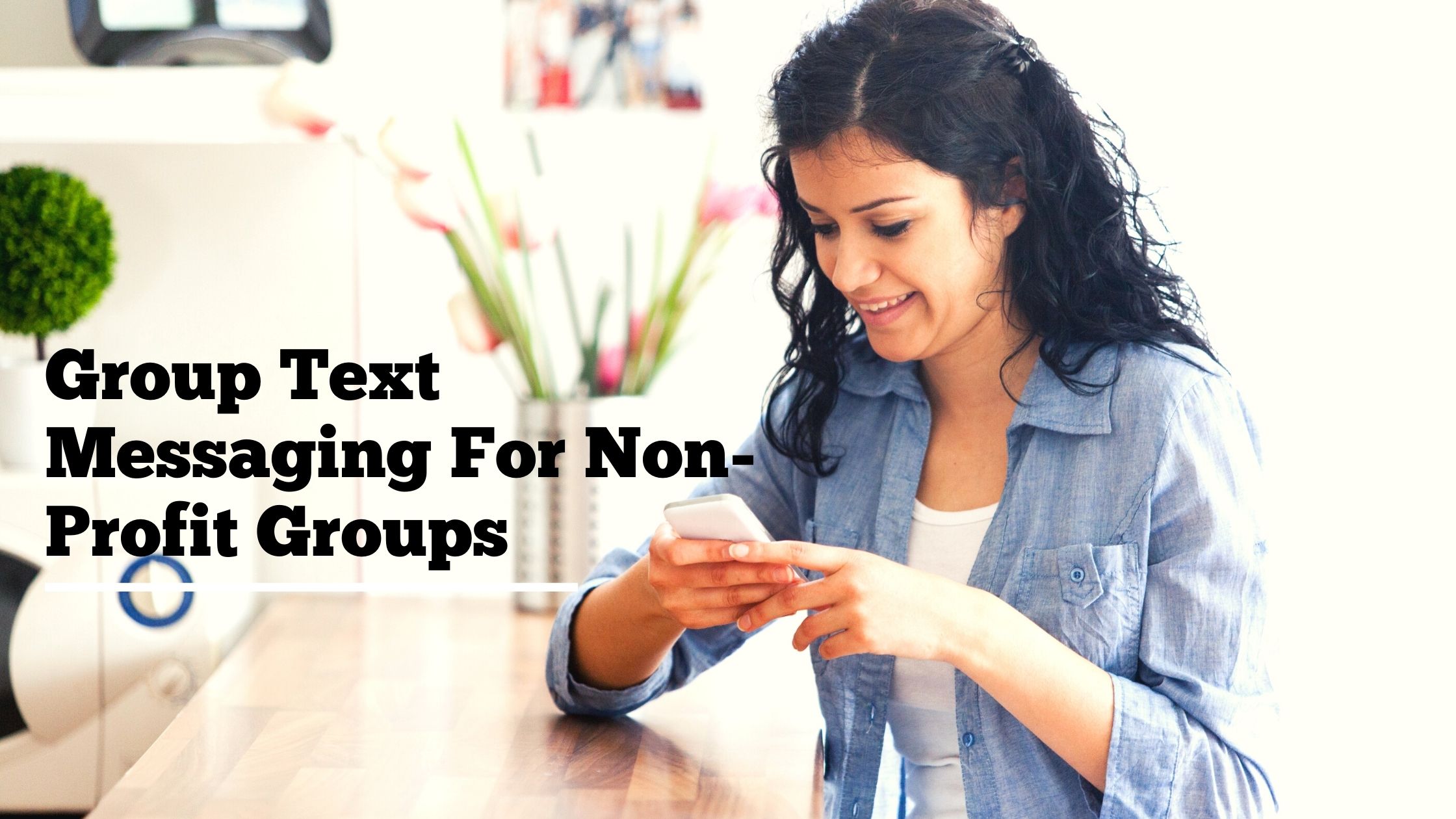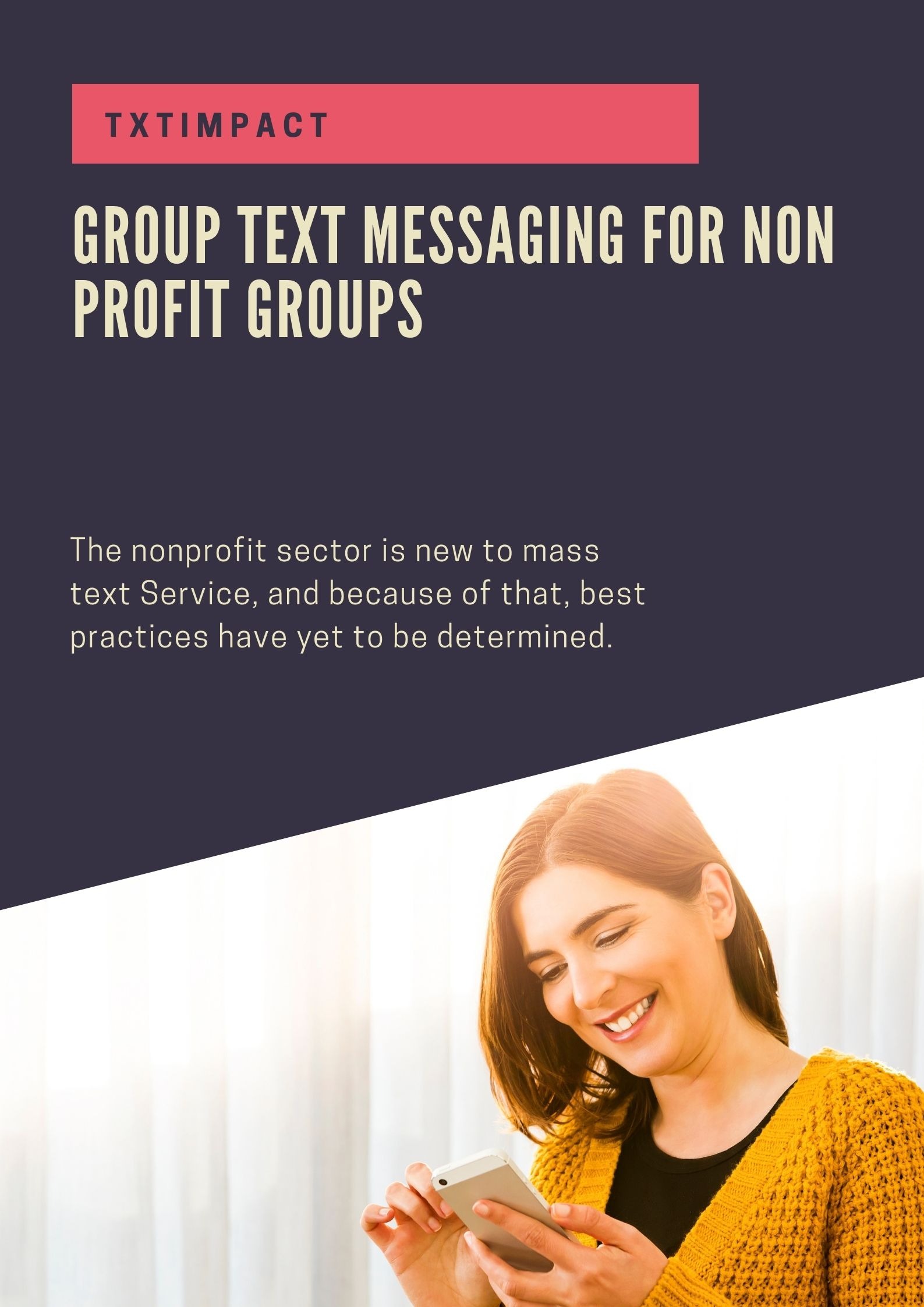The nonprofit sector is new to mass text Service, and because of that, best practices have yet to be determined. There are some basic guidelines to follow when you are launching and managing your group text campaigns; in the beginning, however, your number one objective should be to begin building your mobile list. It is illegal to buy, sell, or trade mobile phone numbers, unlike e-mail and snail mail addresses. As a result, it takes time to build a list, so the sooner you start, the better. The open rate of text messages is over 90 percent, since those who sign up tend to be your most committed supporters, so making the effort to promote your group texting campaign(s) and build your mobile list now could prove to be extremely valuable in years to come as the popularity of group text messaging continues to skyrocket. That said, the purpose of your group texting campaigns will evolve over time as the technology develops, but initially, it’s best to approach group text messaging with the idea of alerting your subscribers to important breaking news that is relevant to your nonprofit’s mission and programs and as a means of sending your subscribers occasional reminders about getting more involved in your nonprofit’s work.
1. Add a “Subscribe to Receive Text Alerts!” Pitch to Your Website, E-newsletter, Blog, and Print Materials
Create a “Subscribe to Receive Text Alerts!” page on your website that details the purpose of your group texting campaign, how it works, how often text messages will be sent, and, most important, how to subscribe. In addition to information on subscribing by keyword and shortcode, you should also embed an online form or widget (provided by your vendor) on the page that easily allows people to type in their mobile number to subscribe instantaneously. This new page should then be linked near the e-newsletter subscribe option on your website and blog. You should also add a “Mobile” field to your donation forms and event sign-up sheets, and add your keyword and shortcode subscription information to your print newsletters. It’s also crucial to add a link to your “Subscribe to Receive Text Alerts!” page in your e-newsletter (80 percent of new group text subscribers come from email lists!) and your “Thank You” landing pages and e-mails. Finally, there are icons for SMS that you can download and integrate with your social networking icons on your website and your blog. Of course, you also want to create a “Subscribe to Receive Text Alerts!” page on your mobile website.
2. Create a “Text-to-Subscribe” Graphic for Social Networking Sites
You should create a graphic that visually compels people to subscribe to your text alerts. Whether it is a custom graphic designed in Photoshop or simply your text-to-subscribe keyword and shortcode pitch (for example, “Text PETA to 73822 to sign up for text alerts!”) embedded in a powerful photo, you want an image that you can upload to send out in Facebook status updates, link to in tweets, upload to Flickr, and so on. Simple text pitches aren’t enough to compel people to subscribe. Get creative in integrating your text-to-subscribe keyword and shortcode pitch into photos, slide shows, or even your YouTube channel banner. Additionally, you should also occasionally link to your “Subscribe to Receive Text Alerts!” page in status updates and tweets.
3. Pitch Your Keyword and Short Code in Check-Ins
When you are checking in to places, venues, and spots on location-based communities, add your text-to-subscribe keyword and shortcode pitch to status updates and shouts. Your friends on location-based communities will literally have their smartphone in their hands as they read your status updates and shouts, making it much more likely that they will subscribe to your group texting campaign.
4. Add Your Text-to-Subscribe Keyword and Short Code Pitch to Your Twitter Background
If your nonprofit has the ability to create custom backgrounds for your Twitter profile, it’s smart to add a text-to-subscribe keyword and shortcode pitch. Even though Twitter backgrounds are simple images that cannot include hyperlinks to other websites, nonprofits often do add their website and social networking URLs to Twitter backgrounds. If Twitterers are willing to open a new browser and manually type in URLs, then they are just as likely to pick up their phone and send a text to subscribe.
5. Send Text Messages That Are Timely and Relevant to Current Events
Most often, your group text messages should be relevant to current events or important news updates about your nonprofit. They should be timely, should often communicate a sense of urgency, and, when possible, should include a call to action. Group text messaging is primarily meant to mobilize your supporters instantaneously wherever they are located. For this reason, group text messaging is especially relevant to advocacy and activist organizations.
6. Send a Mixture of Informational and Call-to-Action Text Messages
You should occasionally send simple informational group text messages that are not necessarily timely but are useful or inspirational. Ideas include a powerful quote or statistic, health tips, shopping suggestions, and “Save the Date!” event announcements. A mixture of text message content is good; however, before you send out a text message, always ask yourself whether the message is useful. If it is not, don’t send it! Since the open rate for text messaging is so high, each and every one of your messages should be well thought out and interesting.
7. Send Periodic Text Message Reminders to Donate Online or via Text-to-Give
It’s also wise to send group text messages reminding people to donate on your website or to text-to-give, especially at the end of the year, when most donations are made. It’s likely that in years to come, tens of thousands of nonprofits will be sending text message donation reminders en masse on December 30, so now, before the law of diminishing returns begins to kick in, is a very good time to be an early adopter.
8. Don’t Send More than Two or Three Text Messages per Month
Open, click-through, and unsubscribe rates will clearly guide the frequency of your group text messaging campaigns, but at the beginning, limit your text messages to two or three a month maximum. Subscribers are much more likely to pay attention to your text messages and take action if they are sent infrequently. It’s very easy to unsubscribe from group texting campaigns, so proceed with patience. If you are to retain your subscribers, your text messages have to be good. Most subscribers hear their smartphones chime when your message arrives. If they stop what they are doing, pick up their phone, and see a mediocre text message from your nonprofit, they will reply with “STOP” in two seconds flat.
9. Link to Your Mobile Website in Text Messages!
Your subscribers will be reading your text messages on their mobile phones, not their desktops or laptops. Therefore, do not link to your desktop site in text messages! That said, not everyone will be able to view your links on their phones, but smartphones and data plans will continue to fall in price in the coming years, ensuring the continued rise of Mobile Web browsing.
10. Pitch Your Social Networking Communities in Text Messages
Every few months, send out a text message letting people know that your nonprofit has a presence on Facebook, Twitter, YouTube, Foursquare, and other such sites. Ideally, you should link to one Web page optimized for mobile browsing that includes links to all your communities in their mobile format, or to the home page of your mobile website if you have social networking icons featured prominently. Otherwise, mention your communities individually in text messages strategically spaced out during the year.
11. Use Bit.ly to Track Click-Through Rates
The more expensive group text messaging vendors offer useful stats and tracking tools, but if you want to save money and opt for one of the low-cost vendors, then you can use Bit.ly to track click-through rates in text messages. Shrinking the links also allows you more characters in your text marketing. It’s wise to create a separate Bit.ly account for mobile tracking only. It makes it easier to track your mobile progress over time if your Bit.ly links are not merged with your desktop click-throughs and traffic.


